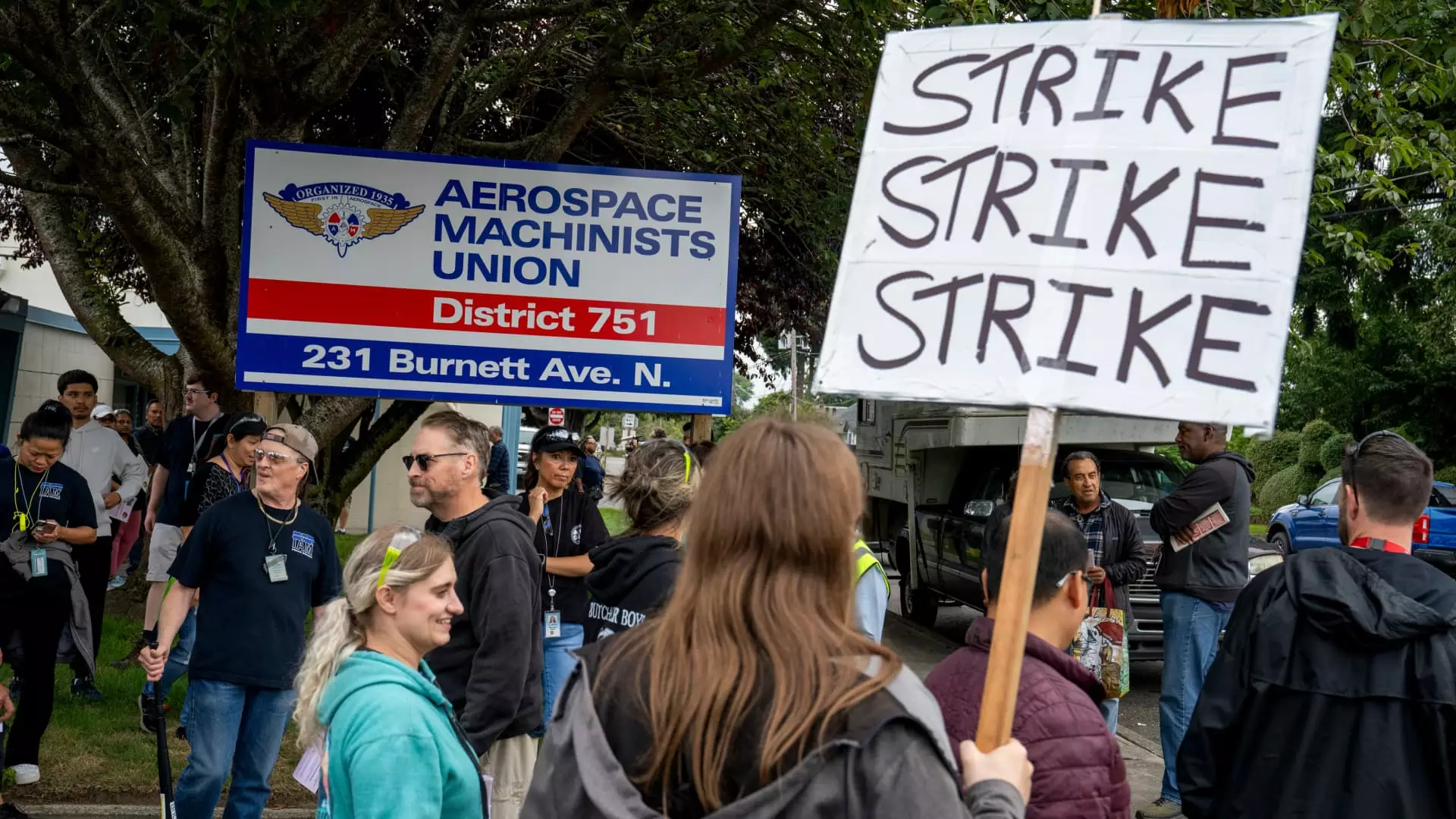The aerospace industry is facing yet another trial as more than 30,000 Boeing employees in the Seattle area and Oregon have voted overwhelmingly to strike. This labor unrest comes on the heels of the workers rejecting a proposed contract that many deemed inadequate and unreflective of their needs, especially against a backdrop of rising living costs.
The Context of the Strike Vote
The decision to strike was formalized with an astonishing 94.6% of employees voting against the proposed labor agreement. The contract, negotiated between Boeing and the International Association of Machinists and Aerospace Workers (IAM), was revealed shortly before the vote and aimed to enhance wages and benefits for workers. However, the allure of a 25% wage increase paled in comparison to the workers’ demands, which centered on a 40% raise. Such a disparity indicates a profound disconnect between employee expectations and Boeing’s offerings.
IAM District 751 President Jon Holden articulated the growing frustrations of the workforce, claiming that the alleged “unfair labor practices” at play involved discriminatory conduct, coercive questioning, and unlawful surveillance. These accusations underscore a deteriorating relationship between the company and its workers, suggesting that the labor sentiment has soured significantly and may be indicative of deeper systemic issues within Boeing’s corporate culture.
Although initially quiet following the strike vote, Stephanie Pope, CEO of Boeing’s commercial airplane division, had previously characterized the proposed contract as “the best offer we’ve ever presented.” This statement illustrates a company that may be out of touch with its employees’ realities, particularly in light of complaints that the proposed raises do not adequately address the rising cost of living.
Boeing’s leadership faces a precarious balancing act. Newly appointed CEO Kelly Ortberg urged workers to accept the contract, warning that a work stoppage could further jeopardize the company’s fragile recovery post-pandemic and following a series of safety and production crises that have beleaguered its operations. The vote against the contract is a stark setback for Ortberg, who in his brief tenure has already been confronted with one of the most significant labor disputes in the company’s history.
The Broader Economic Impact
The implications of this strike extend beyond Boeing, threatening to destabilize not only the company but also its suppliers and the wider aerospace ecosystem. According to Jefferies aerospace analyst Sheila Kahyaoglu, a 30-day strike could inflict approximately $1.5 billion in losses, a staggering figure that highlights the financial stakes at play. Moreover, the ongoing production issues and the need for rigorous quality control create a situation where every operational disruption can have cascading effects on the supply chain.
If the strike escalates and lasts for an extended period, the financial ramifications for Boeing could be dire. Given the company’s previously reported loss of $8 billion this year, any additional financial strain could further exacerbate its mounting debt. The proposed agreement would have marked the first fully negotiated contract for Boeing’s machinists in over a decade, making the rejection not just a labor issue, but a reflection of the growing frustrations of a workforce beleaguered by safety incidents and production delays.
As Boeing workers prepare to initiate their strike, the path forward remains uncertain. The choice to strike reflects a broader dissatisfaction with the state of labor negotiations within the aerospace industry, underscoring the challenges that manufacturing companies face in maintaining workforce morale and profitability amidst external pressures.
The strike may galvanize not only Boeing workers but also inspire similar actions in other sectors facing labor disputes. As the aerospace industry navigates the complexities of post-COVID recovery, the importance of addressing labor concerns with sincerity and effectiveness cannot be overstated. Fostering a constructive dialogue between management and employees will be pivotal in averting long-term damage to both the company and the industry at large. Therein lies the challenge: to bridge the gap between corporate objectives and workforce expectations to create a sustainable pathway to recovery and growth.

